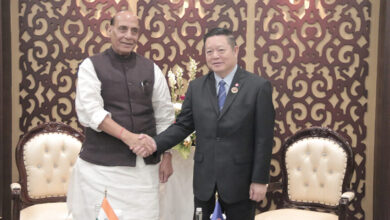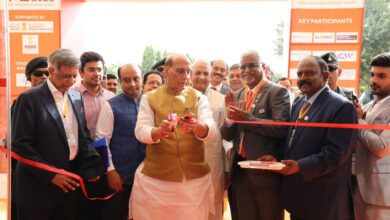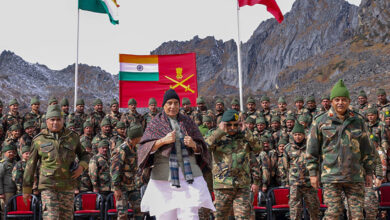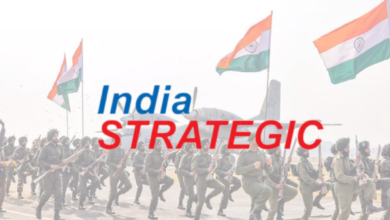India Marks 73rd Independence Day with Colors and Resolve

New Delhi. No country is as diverse as India is in terms of geography, history, faith, region, languages – you name it. This makes it incumbent upon the prime minister of the day to utilize the Independence Day to spell out what called as the State of the Nation. Prime Minister Narendra Modi did that on August 15th, the nation’s 73rd anniversary.
Coming just 10 days after his government ended the special status of Jammu, Kashmir and Ladakh, there was anxiety about what he would say. He reached out to the people there even as he spelt a tough line against terror and infiltration from Pakistan, but ignoring it by name. This was expected and necessary.
He talked of the security situation and ended a two-decade wait for the appointment of the Chief of Defence Staff (CDS) for the armed forces. While details about the appointment are to be worked out over the next couple of months, it may be recalled that a decision had been hanging fire for long, certainly after the Kargil Committee headed by the late K. Subrahmanyam had strongly recommended it almost two decades ago. Subbu Sir, as he was known, was India’s leading strategic thinker, a top official in the government and Director of the Institute for Defence Studies and Analyses (IDSA).
The modalities of the CDS would need coordination among the three Services and all stakeholders in the security establishment.
The Prime Minister declared his resolve to push India’s economy on way to a USD 5 trillion economy in the next 5 years.

He also talked of the macro economic issues, especially jobs that his government has failed to generate in big numbers. He talked of climate change, touching upon mundane issue like ending the use of plastic even as he committed India to work with the world community.
Without saying it in so many words, Mr Modi was speaking on his time-table of tackling issues at home and his foreign visits — to Bhutan next door, to UAE and Bahrain in the Middle East, and to France to be with other world leaders at the G-7 Summit.
In short, as it should be, it was a mix of idealism and the real, acknowledging the problems, and also rising popular expectations.
Modi’s address was special this year in that this was first since he won a fresh – and bigger – popular mandate in the elections this year. Millions more who had voted for him listened to his address.
As Independence Day goes, India follows the tradition set by many a country of centering the celebrations on a particular venue. But none, perhaps, has a venue, like the Red Fort or Lal Qila, uninterrupted for 73 years, that is both the symbol of the beginning and the end of India’s freedom movement.

It was from here the Indian soldiers fought the British East India Company in 1857-58, and it was from here that those who fought the Allied Forces as the Indian National Army (INA) during the World War II were tried by the British in 1946. It was but natural that free India’s first Prime Minister, Jawaharlal Nehru, chose the fort’s ramparts in 1947 to herald modern India’s freedom.
Each prime minster since has followed this, making it an occasion to remember. Muggy August weather or even rain has not dampened the spirit of those who attend, from ministers and lawmakers, soldiers and civilians and school children.
Modi could not but follow in these steps. His 6th ascendance to the ramparts this year was another milestone. He provided the backdrop of the last 5 years he has been at the helm and what he plans to change the lives of 1.3 billion people.
Besides the security situation arising out of Pakistan-instigated terror in Jammu & Kashmir, which has now been turned into Union Territories after ending the ‘temporary’ clauses for their special status in the Indian Constitution, Modi also was touched upon population planning, something many of his peers have shied away from. He also dwelt on equally urgent water conservation amidst a spate of heavy rain and floods in many parts of the country, and declared a War Against Plastics by ending the use of single use plastic items from October 2 across the country.
Some policy measures, including the creation of a separate ministry, are already in place to deal with the crippling water crisis in India which gets worse every year. He spoke of the need to fight the climate change, an issue that is engaging global concerns, and linked it to mundane things keeping one’s surroundings clean and hygienic.
Modi’s emphasis on the need to accelerate population planning came amidst reports by the United Nations that India will outstrip China, earlier than estimated, to become the world’s most populous nation. His call for people’s participation in all these and also for development of tourism and domestic industry and enterprises was in the right spirit.
His I-Day declarations of intent can be summed up in three Ps – Paani (Water), Poverty and Population. All these three have serious implications on the security of the country also.
He explained why his government had made, and the President had approved the constitutional, legal and political changes in Jammu, Kashmir and Ladakh. He sought to reach out to the people of Jammu, Kashmir and Ladakh to tell them that peace would bring prosperity and stability in their own lives.
Ever since India’s independence, Pakistan has been needling India through terror and military incursions. Pakistan occupied a third of Kashmir in 1947-48, and despite the UN mandate in 1950 to vacate this occupation, has never done so.
The Indian Government says that the issue is of Pakistan vacating the parts it had occupied, not what India does internally with its northern state, now carved into separate Union Territories to be administered by the Central Government. In fact, the Indian action is a replay of Pakistan’s own similar action in taking over control of Gilgit Baltistan in the Pakistan Occupied Kashmir.
A populist and an orator to boot, Mr Modi’s deliberate omission of Pakistan in his speech was aimed at playing it cool while he gets criticized by the Pakistani military and political leadership.
Modi also repackaged his earlier idea of Maximum Governance-Minimum Government, and “ease of living”.





